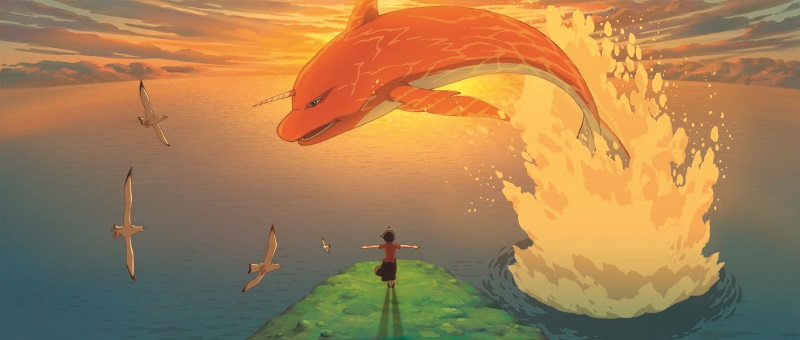Fantastical Exploration of Cultural Roots

These days, many are obsessed with the blossoms and vitality of spring, but few ponder the reasons it arrives. A sci-fi short story contemplated what it would be like if spring had to be brought back: To adjust Earth’s axis after gear in Earth’s core breaks, humans venture into the North Sea on the back of a “giant fish.” Many people transform into “giant fish” to accomplish the great mission. Their warm hearts and selfless love continue to bring spring back to the world every year.
Such wild and beautiful fantasy originates from Chinese traditional myths and legends and was integrated into science fiction by writers featured in the anthology The Way Spring Arrives and Other Stories, supported by a team of female and nonbinary creators.

The book highlights creative utilization of classic and traditional Chinese fantasy sources in sci-fi and fantasy novels and brave exploration and expansion of sci-fi literature. The word “spring” in the book name can be understood as “coming hope,” representing diverse and dynamic creation forms. The collection includes both sci-fi and fantasy works to offer new perspectives to break the boundaries between science fiction and fantasy and generate discussion on the concept of “pan-fantasy.”
The stories in the book not only feature traditional and classical Chinese literary elements from ancient to modern times but also are injected with extremely romantic sci-fi imagination on the microcosm.
Inspired by Viewing the Snow Scene from the Mid-Lake Pavilion, a representative work of prose by Zhang Dai, a writer and historian from the late Ming Dynasty (1368-1644) and early Qing Dynasty (1644-1911), the story Restaurant at the End of Universe: Tai-Chi Mashed Taro by Wu Shuang follows the time travel adventures of Zhang Dai who meets new friends in the universe.

By contrasting the vastness of the universe and the smallness of the pavilion as well as the cutting-edge technology of the quantum food box and traditional Chinese scenery of the snowy lake in a white haze, the story not only vividly presents traditional Chinese culture and aesthetics, but also creates a new style of sci-fi perspectives and methods.
Many works in the book found inspiration for fantasy from places other than classical culture. The Stars We Raised by Xiu Xinyu tells the story of a boy longing for love and companionship. A Brief History of Beinakan Disasters as Told in a Sinitic Language by Nian Yu is a magnificent epic about the evolution of species and the rise and fall of civilizations on a cosmic scale. Blackbird by Shen Dachen focuses on aging and people’s self-esteem.
Chinese scholar Wang Furen considers ancient Chinese mythology so full of vitality that it has inspired writers to develop a new trend of a sci-fi genre featuring traditional Chinese cultural elements influenced by science and modern literature. The book offers not only beautiful fantasy stories, but also deep reflections on reality, a strong sense of culture and humanistic care, and detailed visions of the future world.
Analyzing the different perspectives of female and male writers in science fiction has been another emerging trend. Female writers often pay more attention to subtle and soft topics. Instead of a future world constructed by hard sci-fi themes such as advanced technology, artificial intelligence, space exploration and colonization, doomsday, and the ecological crisis, they often choose to explore the inner world of humans including how people face themselves and their culture, how new technology can be developed with love, and how emotions can be relieved.
The book may have pinpointed a new way of thinking for today’s sci-fi and fantasy writers. Many are integrating imagination with the land under their feet to find the inspiration, aesthetics, and cultural building blocks for their works.